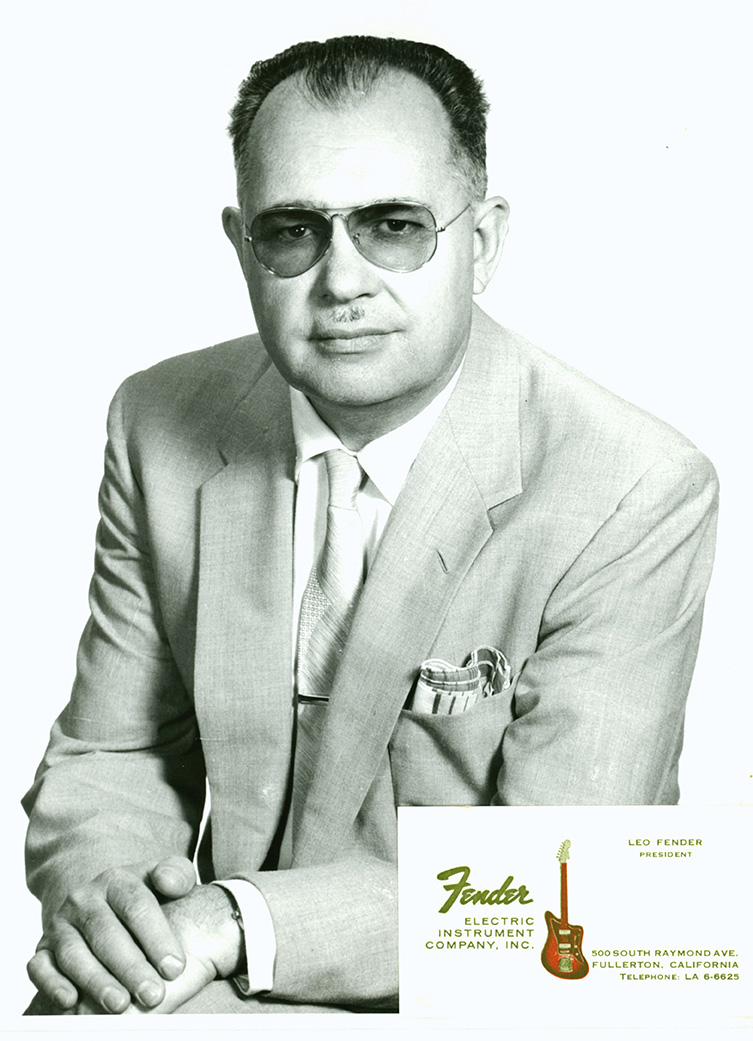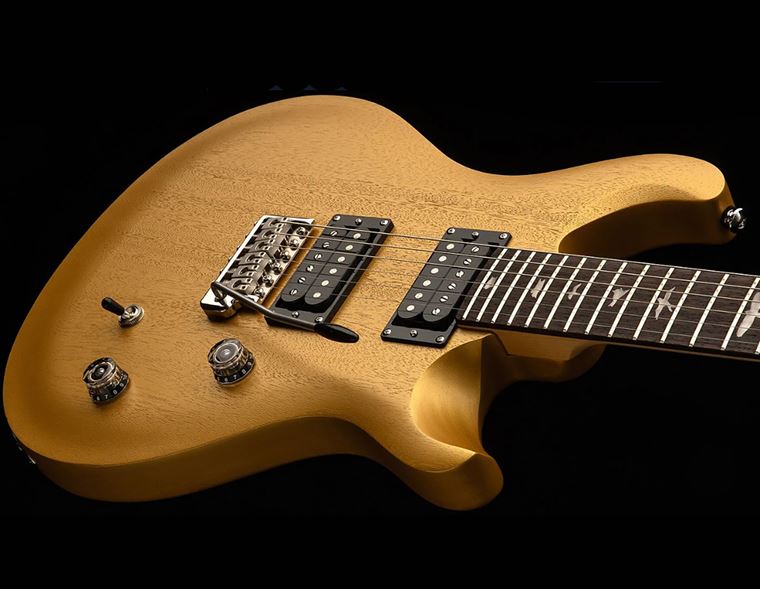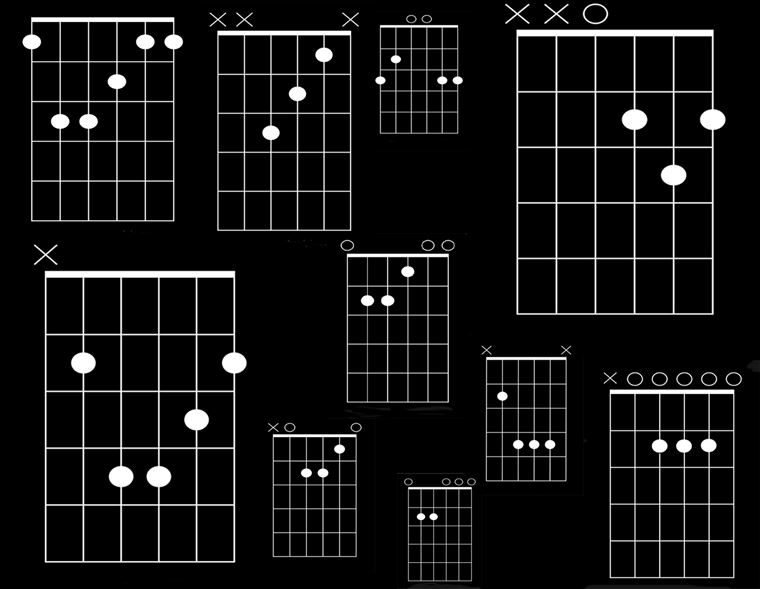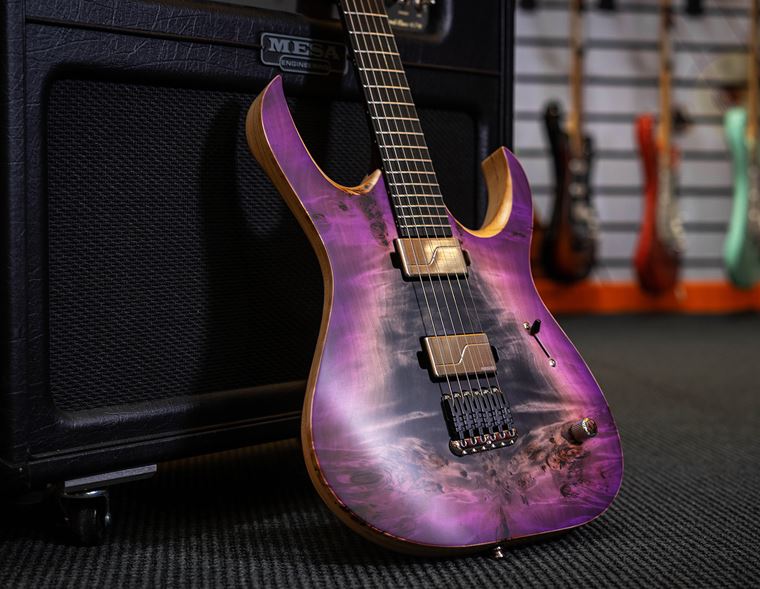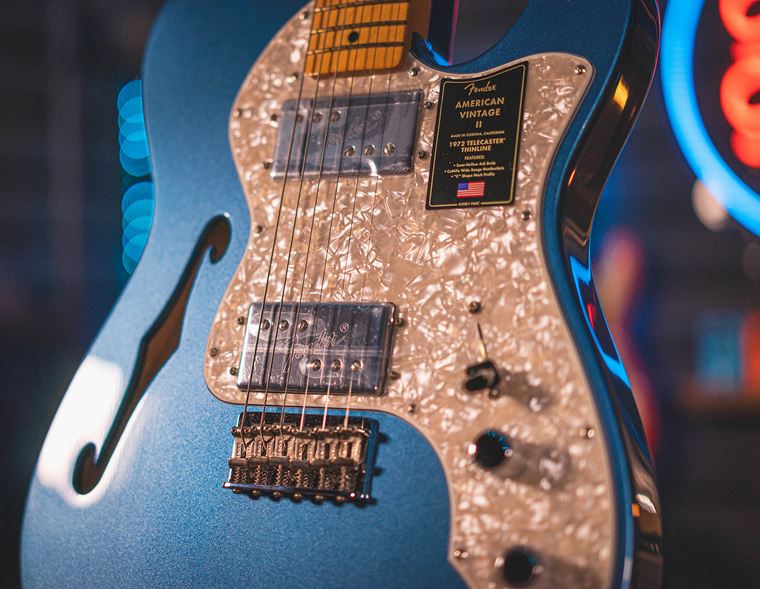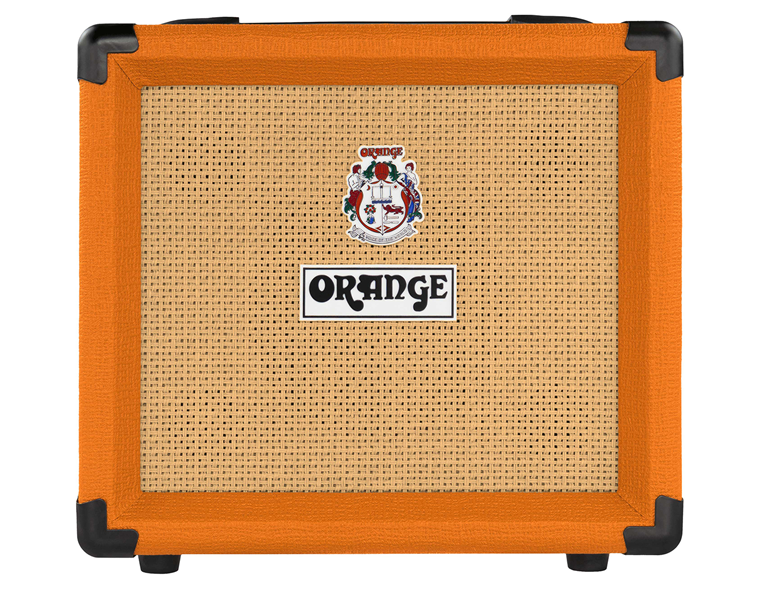Fender: A Brief 75 Year History
You love Fender, right?
If you’re a Strat fan, you love Fender. A Tele aficionado? You love Fender. A Les Paul player? You still love Fender. The same goes for hollowbody-loving trad jazzers, djent shredders and all other permutations of human who pick up a guitar in order to express themselves: everyone loves Fender.
Why?
Simple. Fender did so many things right, so early on. In a very short period of time, they invented, defined and dominated the very idea of an electric guitar. They produced the most famous designs in history. Those designs have endured because they worked exceptionally well, right off the bat. The invented the electric bass. Their amplifiers are the ones almost every subsequent amp company copied, up to and including today’s amps. It’s spooky to think of how many Fender inventions remain in constant mainstream use, three quarters of a century on from their inception.
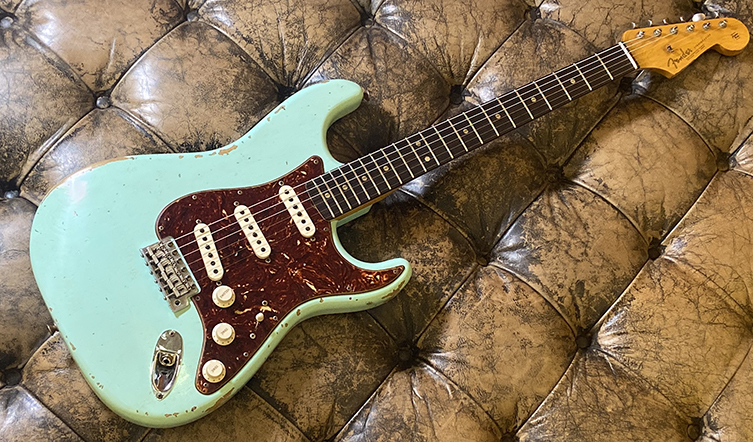
Fender are just too significant, popular and historical for real guitar (and music) lovers not to appreciate.
75th Anniversary
In this special 75th year of Fender’s life, we wanted to contribute to the celebration by taking a quick skip through the history of the company. Given that there’s 75 years to cover, you’ll forgive us if we keep things brief and snappy: we promise to include some awesome photos, though! Come with us as we travel back to those sun-bleached, simpler times of mid-forties California, where it all began...

The Forties
Fender fans will know that Leo Fender first set up shop in Fullerton, California in 1946. Being an engineer (and not actually a musician), it may not surprise readers to learn that amplifiers were Leo’s first major concern. Indeed, his initial ventures were with a partner called Doc Kauffman, who went into business as K&F. The first amps showed up in 1946, known as the ‘Woodie’ Series. They bore some names we’ll come to recognise later on with Fender, such as the Princeton, along with the ‘Model 26 Deluxe’ and the Dual Professional.
Leo Fender’s goal was to try to improve the situation for guitarists who, at the time, had to rely on substandard methods of amplifying their hollowbody guitars. Leo figured he could deliver a more reliable, consistent solution. As we know, he ended pretty much defining guitar amplification to the point that his designs from then are largely still in use. It’s a remarkable thing indeed, and that’s before we even get on to the guitars themselves!
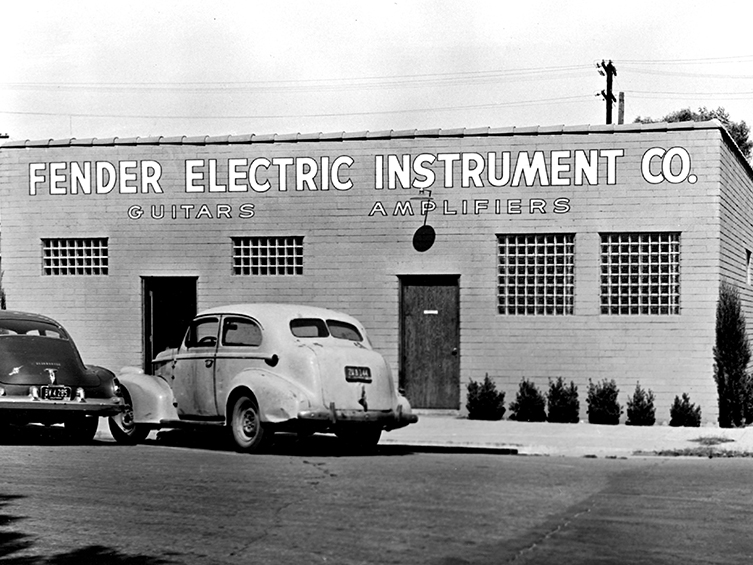
The Rock ‘n’Roll Fifties
This decade will forever be shrouded in Rock n Roll mythology, and Fender plays a huge part in that. The fifties are when we see the debut of the world’s first production line solid-body guitar. You’ll recognise it, because the Broadcaster is readily available today in a form that’s entirely the same as it was in 1951 when it first appeared. Gretsch objected to the name, so the Broadcaster briefly became the ‘Nocaster’ (it was never called that at the time: Fender have retroactively applied it when making modern Custom Shop recreations) before taking on the mantle we all know today: the Telecaster.
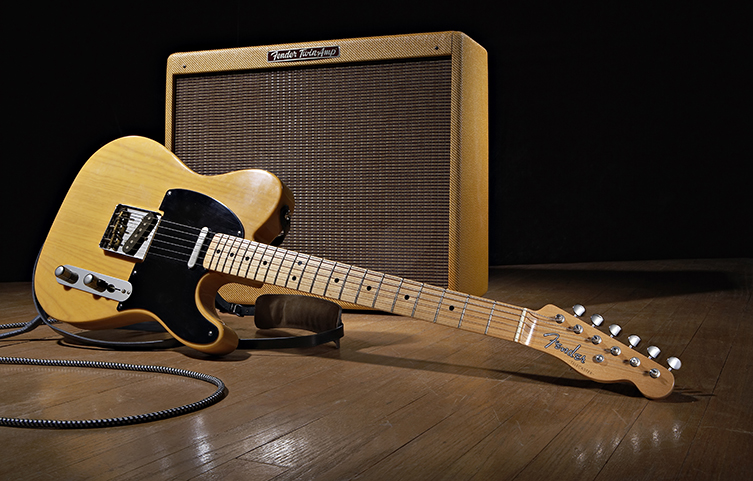
Much like the wheel, the door and the screwdriver, the Fender Telecaster did its job so well from the outset that nobody has bettered it for form or function. The bolted-on neck and ‘slab’ body design was all about being straightforward to produce and easy to modify and replace. Indeed, the whole notion of mounting the electronics onto a piece of plastic (the pickguard) was to allow repair work to be easily carried out. The Fender Telecaster is a true design classic and retains as much charisma and appeal now as it did when the whole notion was brand new and shiny.
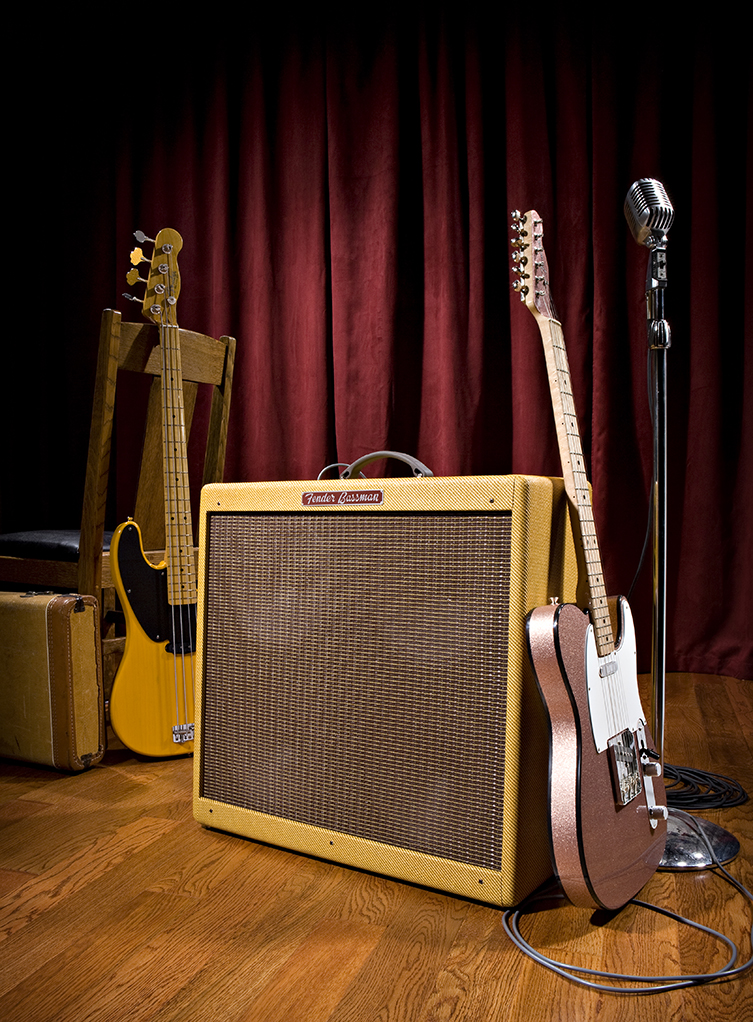
1951 was also the year of another massively game-changing instrument: the Precision Bass. Before then, bass playing meant plonking away on an unwieldy double bass and having to tolerate volume issues and feedback as a result of being unsatisfactorily mic’ed up. The Precision Bass did away with all of that. It was much more portable than an unwieldy double bass, easier to tune and easier to play, given the addition of frets like on a guitar. This, in fact, is how the Precision Bass got its name: the frets allowed the player to play notes with more precision!

The P-Bass also had a magnetic pickup (technology carried over from the Telecaster but modified into a hum-cancelling ‘split coil’ design) and so could be plugged into any of the new bass amplifiers that were coming onto the market from people like Fender. Happy days! Most emerging Rock n Roll bands who’d been using upright basses ditched them immediately for the benefits of the P-Bass. The world has literally never looked back. Only style-conscious retro hipster bands, committed Rockabilly players and Bluegrass traditionalists tend to bring upright basses on tour with them, at least in a ‘band’ context. The Fender bass is just too enticing a proposition to ignore!
1954 – The Birth of the Stratocaster
If one guitar is more famous than the Fender Telecaster, then it has to be this one. Considered to be Leo Fender’s finest moment, the Stratocaster was released three years after the Tele in 1954. The design addressed issues raised by players who’d been out playing the Telecaster for a few years. This was how Leo often gathered ideas for designs and upgrades: by simply hunting down working payers and asking them for their thoughts. Simple but not so many manufacturers were this open and practical!

It turned out that players were asking for three main alterations to their beloved Teles: they wanted more sonic options, they wanted a more comfortable body shape and they wanted easier access to the higher frets. Leo listened and delivered. The resulting Stratocaster bore three pickups, a contoured body and a double cutaway. People like to throw around the term ‘iconic’, but the Fender Stratocaster is easily the most famous and well-recognised electric guitar in the world. It’s also the most copied by a mile, but let’s leave that particular subject for another article...
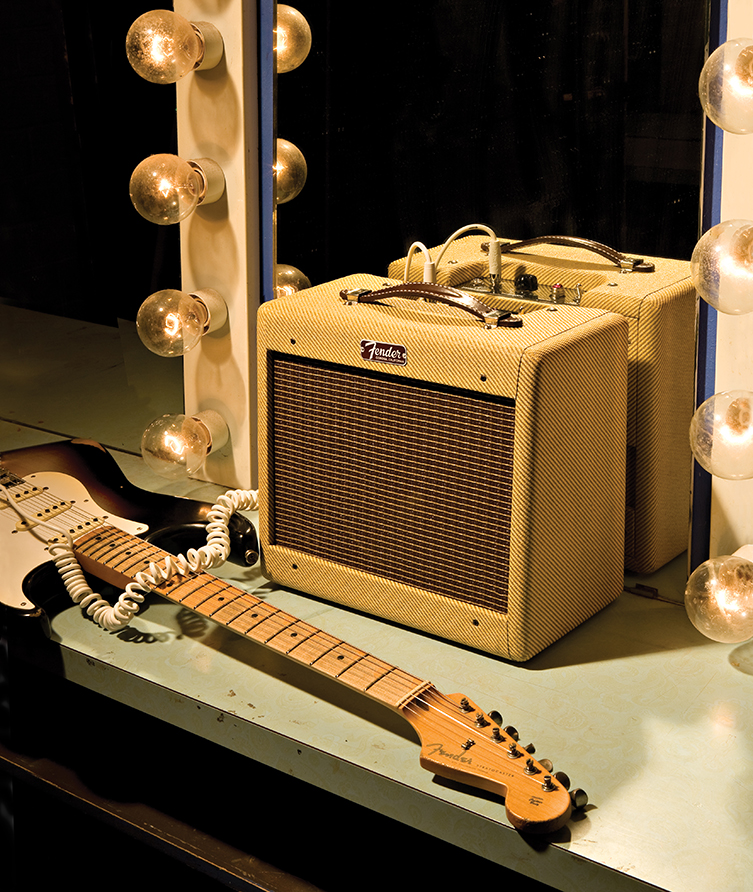
On top of these player-initiated design ideas, Fender sought to capitalise on the trend for pedal steel sounds by introducing a new vibrato bridge to the Stratocaster. Erroneously referred to by Fender as a tremolo (tremolo describes volume fluctuations, vibrato for pitch changes), this new vibrato bridge let the player mimic pedal steel sounds without having to change instruments. Obviously, a whole new language of sound has been created on what we now often refer to as the ‘whammy bar’, but that was the initial reason for creating it! It’s kind of like the invention of the Wah pedal, which was initially meant to let guitarists sound like trumpet players!

Back to the Strat, it’s another example of Leo hitting a home run with his first bat. Although there are many variations of both Stratocaster and Telecaster available today, the vast majority are at least superficially the same as the models that rolled off the production line in the fifties. Many of them are exactly the same, in fact. As we know, us guitarists care about the technical minutiae like no other musicians, and some of us want the exact fingerboard radius, neck profile and fret size as those early Strats, not to mention specifics in terms of pickups and circuitry. Fender know this and provide accordingly. The Stratocaster has proven itself to by the most adaptable and versatile electric guitar in history, and like its sister the Telecaster, is able to be easily and quickly modified to suit certain preferences. Necks can be off in a matter of minutes; pickups can easily be swapped in and out and even entire pickguards can be changed (with entirely different pickup types populating them) for different applications. Given the vast variety of Strat models available, there is likely at least one for every guitar player out there!
Two years after the launch of the Stratocaster, Fender introduced the Musicmaster, a 3/4 sized student model with a single pickup. A two-pickup model, the Duo-Sonic, appeared at the same time with the same 22.5" scale length.
The Jazzmaster

Just before the sun set on the fifties, Fender released a bold new electric guitar design. Larger, more complicated and more expensive than the Strat or Tele, the Jazzmaster, released in 1958, broke onto the scene as Fender’s top model. Featuring a larger body, new (larger) pickups and a more complicated switching system, the Jazzmaster was, as the name suggested, designed to appeal to Jazz players. Jazz was Gibson territory, and Fender had hoped to steal some of their market with a guitar that brought a warmer sound.

In the end that didn’t occur (did any Jazz players ever use a Jazzmaster?), but the Jazzmaster did find a healthy throng of fans in the burgeoning Surf music scene. Appropriately enough for a Californian guitar company, this most Californian of genres required the Fender sound from both guitars and amps (spring reverb was essential) to adequately approximate the roaring sound of the ocean waves. The Jazzmaster found its home, albeit an unexpected one. And so, the Fifties rolled into the Sixties...

The Sixties
By now, Fender had spearheaded a musical revolution. Buddy Holly had made history with his Strat, and a whole raft of new bands were coming through who were playing Rock n Roll and using Fender to do it. Hank Marvin was reputedly the first British person to own a Stratocaster (technically it would have been Cliff Richard since he paid for it!) in 1958, and went on to inspire multiple generations with his custom colour ‘Flamingo Pink’ Stratocaster. Before the Beatles came along, Cliff was the King of British Pop, and Hanks’ use of the Strat was a seminal image for many aspiring musicians.
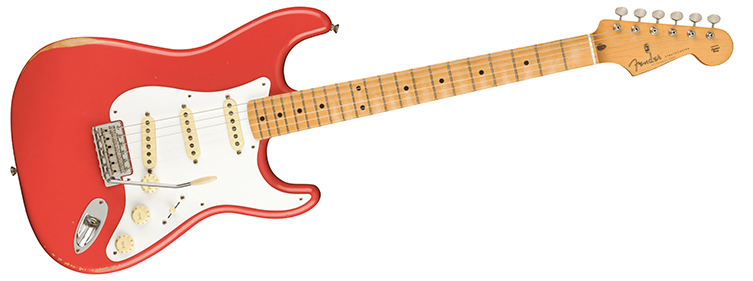
The early Sixties introduced Rosewood fingerboards to both the Stratocaster and the Telecaster. Fender had initially introduced Rosewood fingerboards in 1958 with their new Jazzmaster and found that players had preferences about it regarding feel and sound, as well as looks.
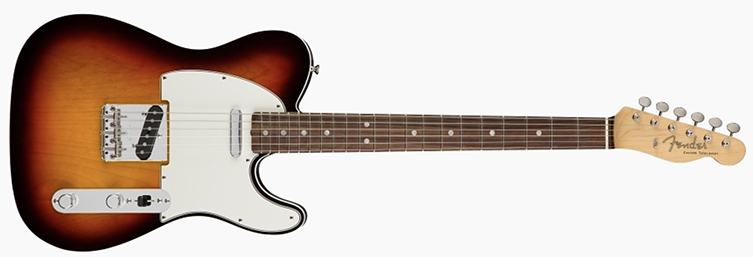
If a classic year for Telecasters in 1952 and 1957 for Strats, then 1962 is the next ‘favoured’ date for both instruments. Wound with slightly hotter pickups (it was just how they were being made at that point) and bearing tactile Rosewood fingerboards, these are now highly desirable guitars which are reissued often. The Telecaster gained some gorgeous body binding and both guitars were treated to new colours. Fender often used the same DuPont paint colours used in the motor industry, further emphasising lifestyle links between the rebelliousness of Rock ‘n’ Roll music and the extravagantly finned Cadillacs and Chevvies of the time. Colours like Lake Placid Blue, Sherwood Green, Candy Apple Red and Daphne Blue are all examples of these DuPont colours.
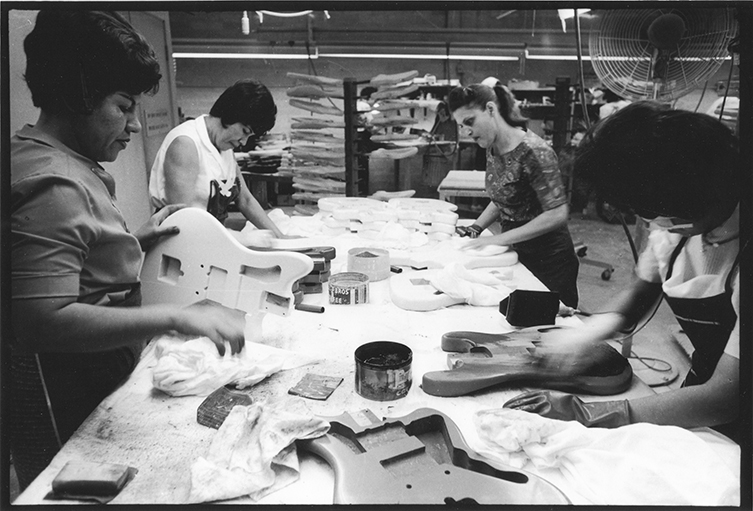
Enter the Jaguar

1962 was an important date for Fender guitars in another way, too. It was the year of the Jaguar! The Fender Jaguar was designed as something of a response to the competition the company felt from Gibson. Gibson’s guitars had shorter necks and more elaborate designs, so Fender responded with the 24” scale Jaguar, with it’s circuitry borrowed (and further developed) from the Jazzmaster, not to mention the body shape! The Jaguar was priced as the most expensive Fender electric guitar, a top-of-the-line model to lure guitarists away from the competition.

Away from their guitars, Fender had been making amps in several guises since the forties. Their ‘Brownface’ era (the term describes the colour of the front panel) from 1959 lasted until 1963 when the ‘Blackface’ era commenced. This is the time of the Deluxe Reverb, the Princeton and of course the Twin Reverb. Again, it’s easy to simply call these black boxes ‘classic’ but they are the blueprint from which a great many of today’s best amps directly spring. Keeping track of Leo Fender’s innovations is no easy task!
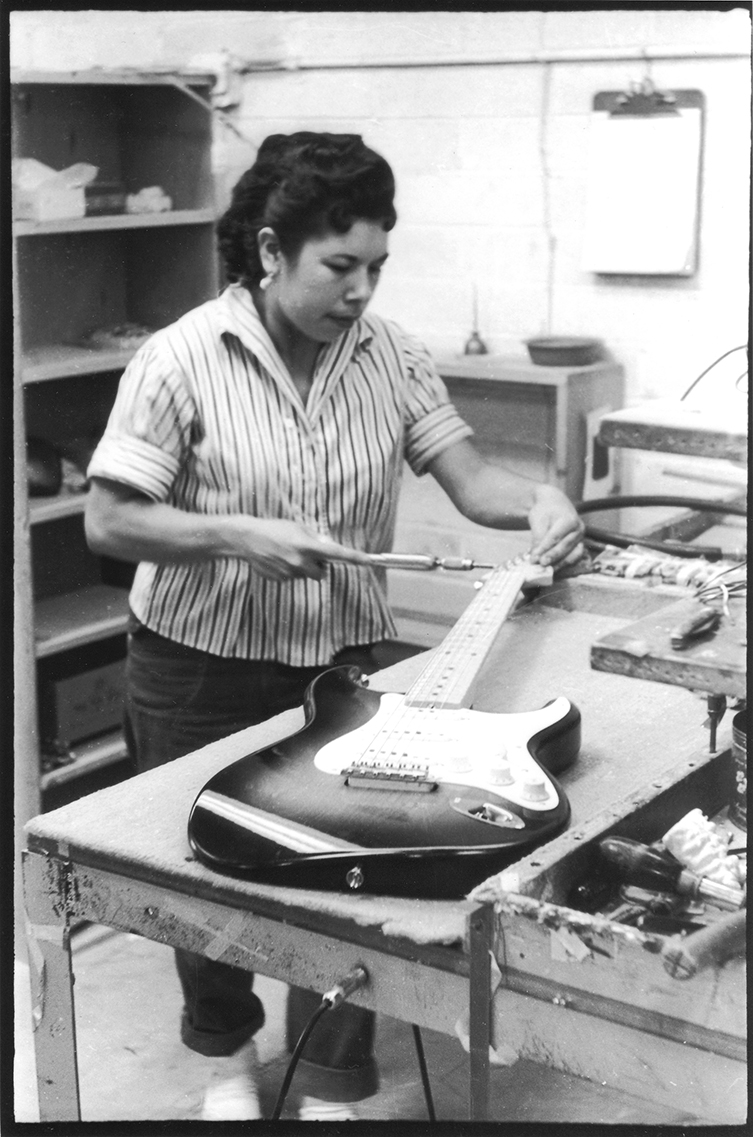
The Blackface era, before reissues and so on, lasted a mere five years, from ’63 till ’67. Right in the middle of this period, Fender was sold to the CBS TV production company. The ‘CBS era’ is a popular subject with collectors, due to many unusual changes introduced by the corporation over the 70s, mainly with the bottom-line profit appearing to be a dominant focus. We’ll look more into this in the next section, but it’s worth also mentioning, just before we leave the 60s, that Fender’s much loved ‘Silverface’ era of amps were introduced in 1967. They ran until 1981 and continued many of the model titles that fans new and loved like the Deluxe, the Princeton and the Twin. Collectors will have their favourite eras of Fender amplifier, but they all contain that beautiful clean, high-headroom tone that defines ‘Fender clean’, no matter which model you pick.
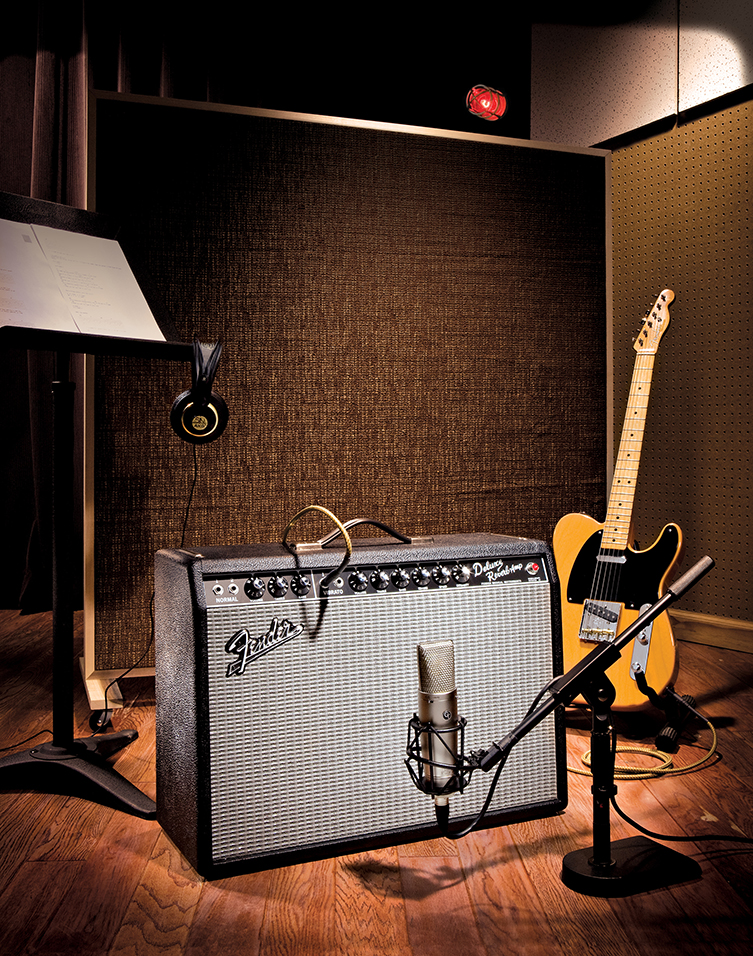
In 1964, Fender instroduced the Mustang, a shorter scale guitar that was seen as a step up from the Musicmaster and Duo-Sonic models. These were redesigned to make use of the Mustang's offset body shape. Although designed for beginners and students, the Mustang has gone on to become a legitimate classic in it's own right. Many professionals love the short scale and expressive tremolo unit, since it gives them access to a sound and feel that no other guitar really does!

The Hard Rock Seventies
The Seventies brought about a heavier, louder sound in Rock music, as harder sounding bands like Led Zeppelin, Deep Purple, Black Sabbath and Queen brought a bigger and more dynamic sound to music lovers. Fender’s signature twang was still popular through artists like Rory Gallagher and Pink Floyd, but the prevailing taste was for beefier, fatter sounds, such as only humbucker-equipped guitars would bring.
This would all still be part of what we’d call the ‘CBS-era’ for Fender. In Fender fan circles, it can be a slightly ‘overly maligned’ time, even if certain production standards did drop somewhat in search of maximising those profits. Some new innovations appeared: some good, others somewhat debatable. Fender introduced a three-bolt neck join at this time, with a ‘bullet’ truss rod adjuster popping out at the headstock. Time has decided that these creations are something of a historical curiosity (reissues still often use this style), but most agree that previous (and later) methods of neck fitting and adjustment are objectively better.
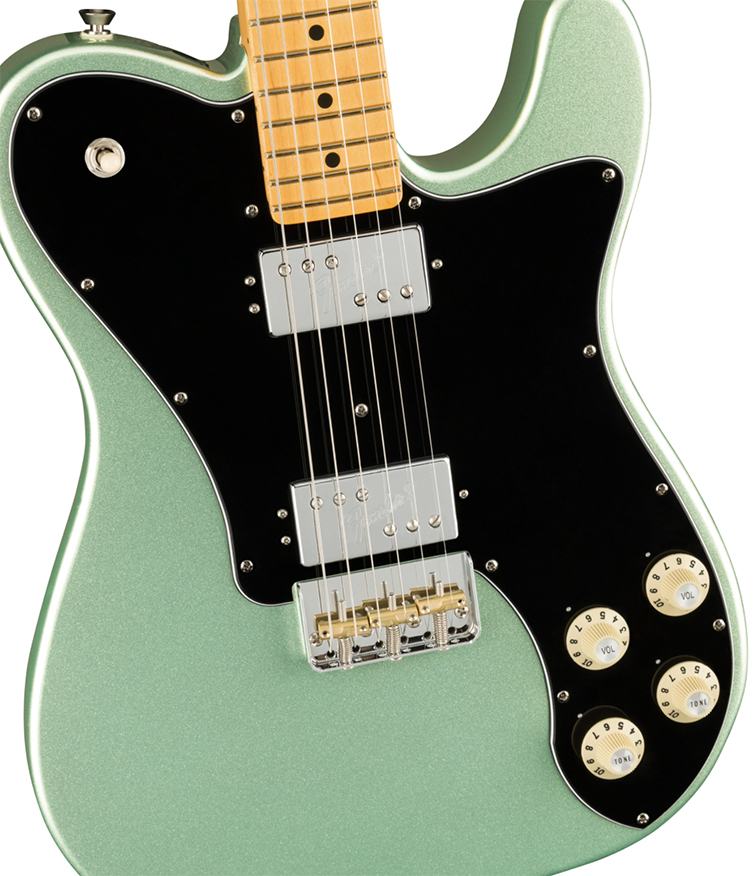
One invention from this period that has aged markedly better is the Wide Range humbucker. Lacking a fresh humbucker design of their own, Fender cheekily pinched Seth Lover - inventor of the PAF humbucker for Gibson - to design something that would beat Gibson at their own game. The Wide Range humbucker debuted on the new and suitably harder-rocking Telecaster Custom and Deluxe guitars (both sporting distinctly Gibson-like control layouts and switching) in 1971 and offered that larger Rock sound Fender needed. The Wide Range humbucker is unique in that it uses an unusual metal combination to form its magnets (copper, nickel and iron as opposed to the more standard aluminium/nickel/cobalt arrangement). Those magnets are arranged as polepieces, like how Fender single coil pickups are made, rather than as a large bar underneath the coil windings, as you’d find on a typical humbucker. The result was a fatter sound with a higher output but still a degree of cut and attack that set them apart from other humbuckers.
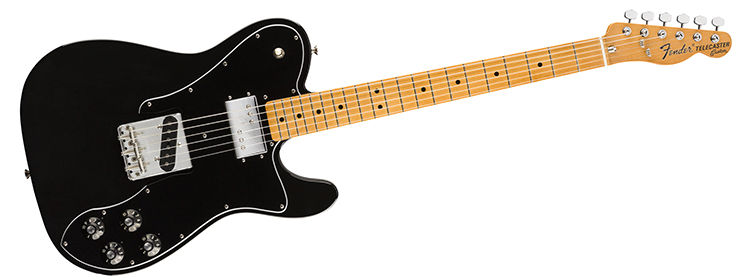
The Telecaster Deluxe (which had two Wide Range humbuckers) and the Custom (which sported one at the neck in combination with a bridge single coil pickup) could be seen in the hands of established stars like Keith Richards throughout the 70s, and have made a triumphant comeback in recent years. The Deluxe, especially, is now an established part of Fender’s standard catalogue.
1975 saw the end of the Jaguar, for the time being. Fender’s hopes for a top-end Gibson killer did not come to fruition, and most guitarists preferred the less fussy, more straightforward Stratocaster and Telecaster. The Jazzmaster stuck around longer, staying in production until 1980.
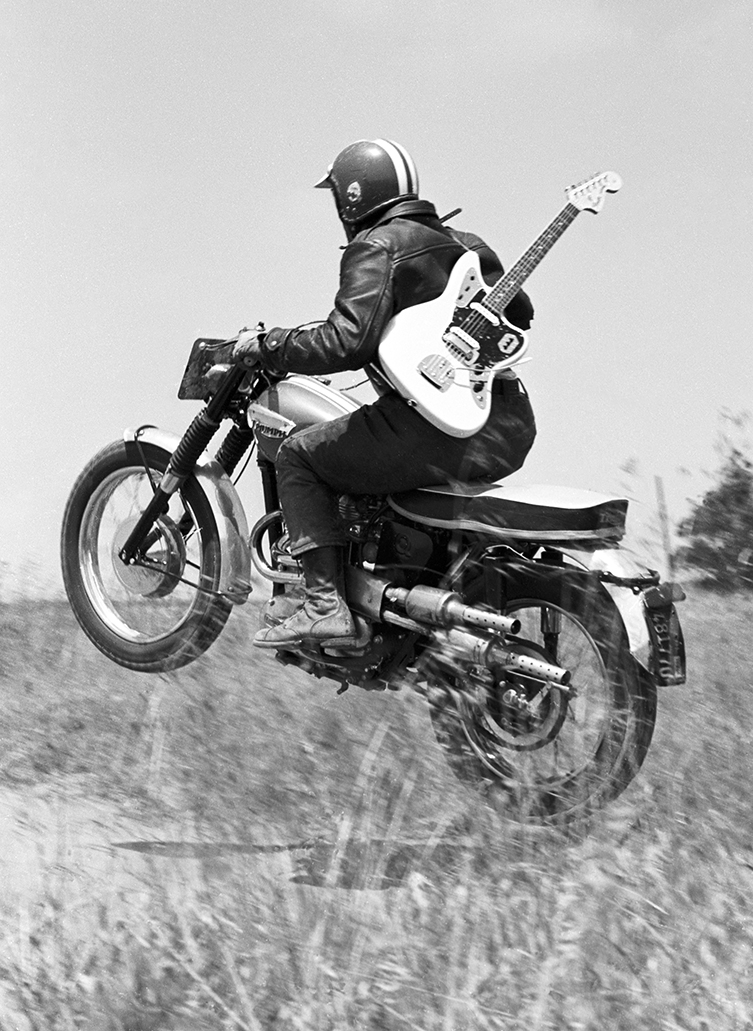
The Eighties: A New Beginning
By the early 80s, Fender were having problems with lots of Far Eastern companies creating copies of their guitars that were, in many ways, superior to their own examples. The CBS years had worn the company down a little, and the glory days of the 50s and 60s were a long way behind them. The 80s, however, were a pretty great year for Fender. Here’s why...
Squier
In 1982, the Squier brand was brought back into use for the first time since the mid-70s. Originally, Squier, which started in 1890, was a high-end violin maker. Jerome Bonaparte Squier (now, that is a name to carry around!) was such a highly reputed craftsman, he was known as the ‘American Stradivarius’. Fender bought the Squier name in 1965, originally for its string business, and ended up retiring it ten years later.
1982 saw the first time the Squier name was attached to Strats and Teles as an ‘official’ import line intended to kill off the copycats. These were originally built in Japan, then Korea and then China & Indonesia, where they are crafted today. Some professional guitarists, like Marillion’s Steve Rothery, swear by their mid 80s Squier Strats, and such models have definite collector appeal today.

FMIC
The 80s saw two other significant events occur. The first was the end of the CBS era. Yes, in 1985, after twenty years of ownership, a group of Fender employees bought back the company from CBS and renamed it Fender Musical Instruments Corporation, or FMIC for short. The original Fullerton plant was not included in the deal, so a new factory in Corona was built instead. The Fender offices moved out of California altogether to take a new home in Scottsdale, Arizona, where they remain today. As an interesting footnote, Leo Fender, who’d had nothing to do with Fender since 1965, would end up back where he started in the very same Fullerton premises with his last instrument company, G&L! By that point, the street it was located on had been renamed Fender Avenue, which says it all.
Fender Custom Shop
The second significant event would be the launch of the Fender Custom Shop facility in 1987. The idea behind the Custom Shop was to create specialised, hand-made one-off guitars for artists and well-heeled customers who wanted their Fenders as vintage-specific as possible, and then customised according to their taste. This was when Fender began taking note of period-specific specs and details, and offering them to those who had such a desire. The Custom Shop started off with a staff of two Master Builders. There are now 50 people employed there.
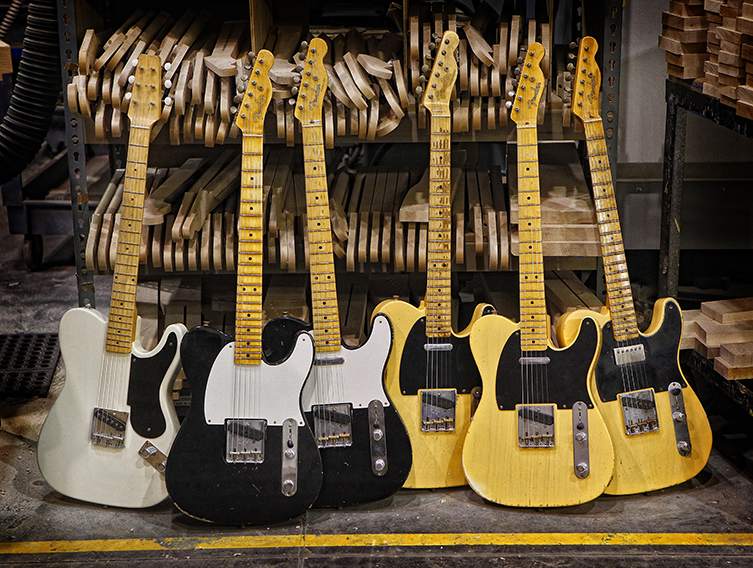
As well as custom guitars for famous artists, the Custom Shop also made reissues of vintage amps. John Suhr, nowadays of the world-renowned Suhr guitars, famously recreated some classic Tweed combos for none other than Eric Clapton. The Fender Custom Shop was and is the high watermark for Fender products, and make some of the finest instruments on the planet.
Artist Signature Guitars
Speaking of guitars for famous artists, the 80s saw the beginning of a very popular area for Fender: Artist Signature model guitars. It’s an everyday thing for all companies these days, but not so much at all in the 80s, though other companies had certainly done this already.
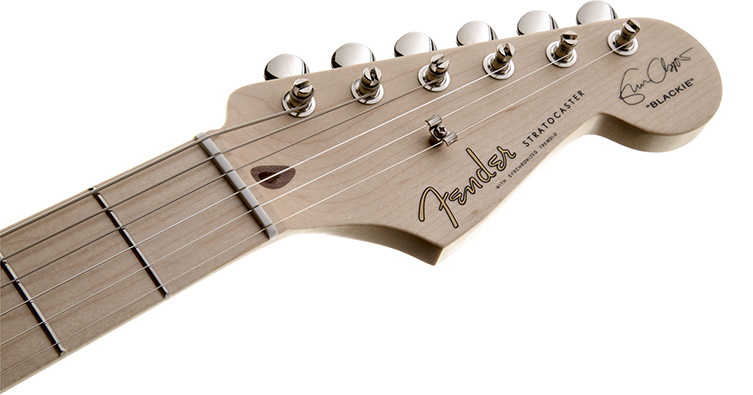
Fender’s first endorsee was ol’ Slowhand himself, Eric Clapton, whose signature guitar is still made today in an only slightly modified form from its 1988 self. Next was Swedish shredder Yngwie Malmsteen, followed by a long list of (mainly Strat-playing) influential Fender users. Some of today’s artist signature Fenders, like Eric Johnson’s, are extremely traditional. Others, like that of Slipknot’s Jim Root, are most definitely not! Both are equally great, and show the inherent versatility of the Stratocaster design.
The Nineties
For Fender, the Nineties were all about Alternative Rock. Grunge was the dominating guitar style, and many players from that scene and beyond had stumbled across old Jaguars and Jazzmasters, which were resolutely out of fashion and hence cheap to snap up! Sonic Youth started this trend, followed closely by My Bloody Valentine and then Nirvana. Kurt Cobain was also partial to Japanese Strats, though he had a Hendrix-like attitude towards looking after them.
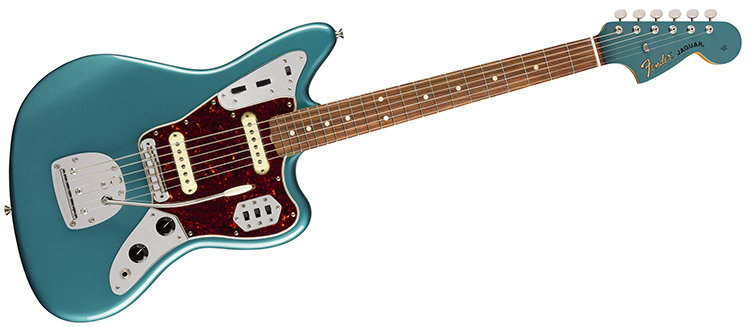
Fender, understanding the cultural temperature, eventually re-released both the Jaguar and the Jazzmaster, but not before issuing Cobain with his own (frankly odd-looking) Jagstang hybrid. Squier followed suit with their now-collectable Vista Series, which included outlandish offset guitars designed by artists like Courtney Love.
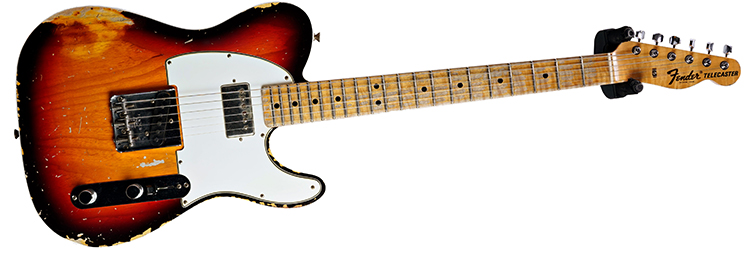
Perhaps the most contentious invention of 90s Fender was that of the Relic. Yes, up until this inspired/alarming (delete as appropriate) concept appeared, guitars with scratches and dings were very much frowned upon. Starting off at the Fender Custom Shop (tales of Keith Richards being the one to suggest it seem to be urban myth, sadly), pre-bashed Strats, Teles and basses instantly polarised opinions. Over 25 years on, Relics are here to stay, and the debate continues to rage! We’ll not weigh in with our opinions here, but we would say that there are practical reasons for a Relic (leave your actual vintage guitar at home and tour with one that’s very close to it in looks and feel but muuuuch cheaper to insure and replace!) and nearly as many reasons (pre-ripped jeans) to be turned off by the enterprise. Both opinions are valid to us!

The Nineties also saw the first ever Mexican-made Fender guitars being released. Until then, the more affordable lines were built in Japan, but that has since stopped, with only occasional special-edition models appearing with the hallowed ‘Crafted in Japan’ decal on the heel of the neck. Fender Mexico, based in Ensenada, make nearly all of the Fender-branded instruments that aren’t built over the border in Corona. Offering value as well as legitimacy (these are not copies but the genuine article), Fender’s Mexican guitars have always been the choice for the discerning guitarist on a budget.
The New Millennium into The Present Day
This new millennium has seen Fender remain the biggest, most successful and most influential guitar brand on the planet. Strats and Teles are still the two bestselling guitar models, and the offsets (the Jazzmaster and the Jaguar) have become more popular than ever. Fender is still the world’s number one choice for basses.
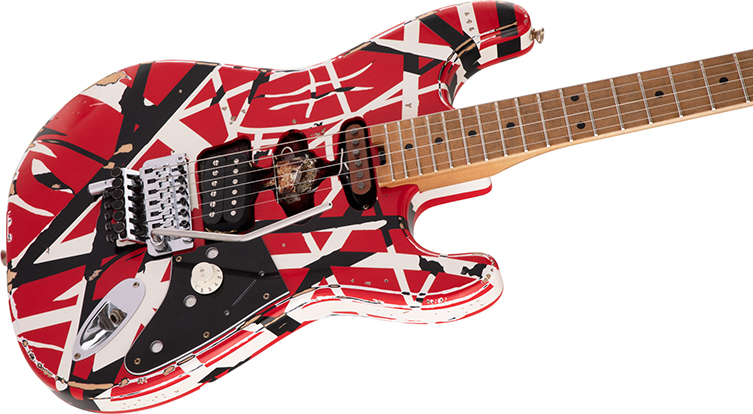
In addition to all of this, Fender now look after some of the biggest other brands in the business. Charvel, Jackson, Gretsch and EVH all fly under the overall Fender banner these days. They’ve pioneered digital amp technology (beginning with the G-Dec and moving onto the Cyber Twin and then the Mustang Series) whilst continuing to build and sell instruments and amplifiers that were designed over 60 years ago. The past and the future co-exist, as maybe they should.
More people are playing Fender than ever before, thanks to extremely well-considered ranges like the Mexican Player Series (possibly the best value mash-up of vintage looks and modern playability yet) and the American Pro II series, which is going down with guitarists and bassists everywhere as perhaps the finest range of ‘off the shelf’ instruments that Fender have ever made.

Leo Fender got so much right, first time out. It’s a rare thing, and a beautiful one too, that so little has had to be altered in three quarters of a century. There’s no need: his simple, utilitarian, practical ideas just happened to sum up and encapsulate everything us players needed. And then some.
Cheers Leo, here’s to another 75 Years!
